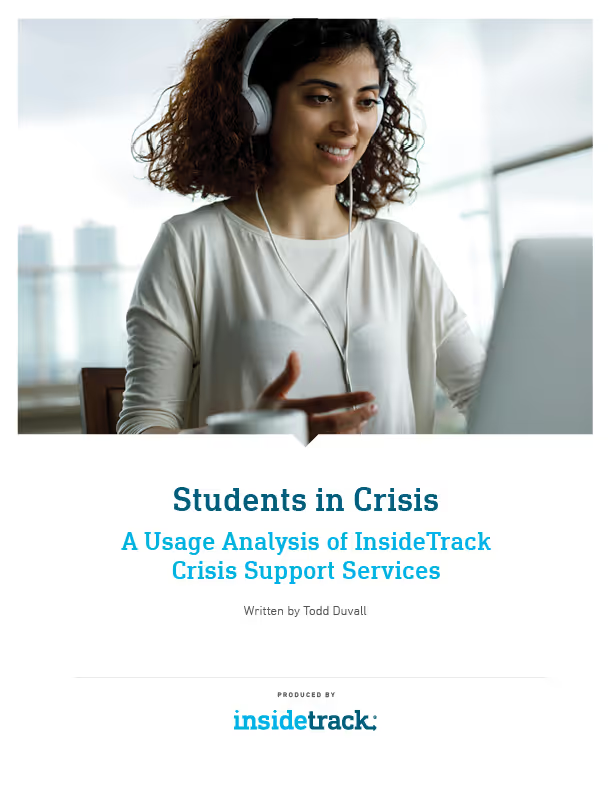
Students in Crisis: A Usage Analysis of InsideTrack Crisis Support Services

Demonstrating the need for student support when it matters most
For a large number of students at colleges and universities across the country, daily concerns go well beyond completing assignments or passing exams. These students are dealing with food and housing insecurity. Financial struggles. Safety concerns and threats of violence. Plus emotional distress — ranging from grief and anxiety to thoughts of suicide. And this was before COVID-19.
To show the exponential growth in the need for crisis support services, we compiled data from January through June of 2019 and 2020. Information we tracked included total number of students served, total number of crisis situations addressed, the nine most common types of crisis escalations, and crisis support interactions by time, date and modality. As you’ll see in the report, the results speak volumes.
Read the report to see the crisis areas where students need the most support — and how the InsideTrack Crisis Support Services team steps in when it matters most.

Crisis Support Services usage data
Read the report to learn:
- The nine most common types of crisis escalations
- What days and times students are most in need of support
- Which communication channel students prefer during crises
- Trauma-informed practices to support students in crisis

